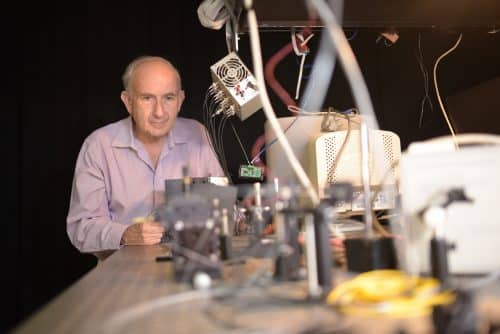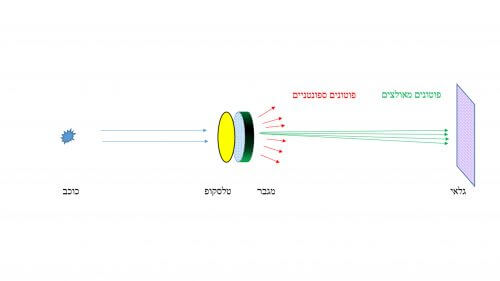Using this method it will be possible to observe at least the planets that are relatively close to the solar system. separate (and not as one object).

The journal Optics Letters heralds a new development that may significantly improve the resolution of telescopes. The research was conducted by Dr. Agla Klerer from the University of Cambridge (UK) and Prof. Erez Ribak from the Faculty of Physics at the Technion.
The resolution (resolution) of telescopes, i.e. the level of sharpness of the image obtained in them, is limited in part by the angular resolution: the smallest angle between two observed objects at which they still appear separate (and not as one object).
The angular resolution, on the other hand, is determined by the phenomenon of diffraction: the light waves "bend" around obstacles in their path - the edge of the telescope in this case - and the light penetrates the area where there was supposed to be a shadow. This phenomenon means that the observed object (a star, for example) will not appear to us as a "clean" point but as a set of rings, and two close objects will appear to us as two sets of rings that "superimpose" each other. In other words, we cannot differentiate between the two objects.
One of the ways to reduce the diffraction - that is, to improve the angular separation - is to increase the ratio between the wavelength and the diameter of the lens. When it comes to a microscope, this can be done by reducing the wavelength of the projected artificial light; In astronomy, where we rely on the natural light that is not under our control, therefore the required solution is to increase the diameter of the lens. Indeed, the huge telescopes built in recent decades provide a very high angular resolution. In medium-sized telescopes, however, the problem of angular separation is still very significant.
The good news in this regard is published as mentioned in the journal Optics Letters, which is published within the framework of the American Optical Society. The technology developed by the researchers at Cambridge and the Technion enables high angular separation even in medium-sized telescopes, by means of a "bypass of the diffraction limit".

The method proposed by the two researchers is based on amplifying photons: beyond the telescope lens is placed an amplifier, which is a medium containing atoms. When an astronomical photon comes from the star and passes through the telescope lens, it hits one of these atoms and causes it to release a large number of photons (forced photons). These photons are also subject to the phenomenon of diffraction, but since they "come in large quantities" it is possible to reconstruct, according to their impact on the detector and based on mathematical and statistical calculations, the angle of impact of the original (astronomical) photon in the lens. This is in contrast to a direct calculation based on the original photon only (in the absence of an amplifier). The innovative method increases the angular resolution of the telescope 10 times - without increasing the size of the lens.
The existing reluctance to use photon amplification stems from the fact that the forced emission is also accompanied by a spontaneous emission that increases the noise in the system (that is, reduces the separation capacity). That's why Klerer and Ribek suggest using the new method only in particularly large photon bursts and not in small bursts, where the relative noise is high.
The two researchers note that "one of the possible disadvantages of the proposed method is the loss of sensitivity in the produced images, but this is a worthy price for the dramatic jump in the level of angular separation. Furthermore, the loss of sensitivity can be partially overcome by increasing the exposure times, i.e. extending the observation time."
Prof. Keller, whose latest research led to the discovery of Earth-like planets 39 light-years away from Earth, says that "even though these planets are close to us in astronomical terms, it will be very difficult to build telescopes large enough to see them. Hence the importance of the discovery that is being published now."
For the full article

2 תגובות
Such a telescope or a prototype should be built and demonstrated.
It is difficult to understand from the article whether this is another innovation or something that will create a significant effect. There are many types of telescopes in the world and the telescope presented has many shortcomings.